




Laws of Motion: Important Concepts and Formulae
Laws of Motion Notes is the most useful and important tool for the students preparing for the NEET exam. In the chapter laws of motion for the NEET exam, we will cover newton’s laws, friction forces, inertial, the concept of impulse, conservation laws, circular motion, etc.
The three statements made by Isaac Newton that serve as the foundation of classical mechanics and describe the link between forces acting on a body and its motion are known as Newton's laws of motion. This unit will have at least one question for candidates. Laws of Motion, Friction, and Circular Motion Dynamics are just a few of the key concepts covered in this section.
In this article, we have provided important concepts regarding the laws of motion chapter that will be asked in the NEET 2022 exam.
Important Topics of Laws of Motion
Newton’s second law of motion
Newton’s Third law of motion
Friction and its types
Linear momentum
Impulse physics
Conservation of linear momentum
Laws of Friction
Circular motion
Centripetal and centrifugal forces
Important Concepts of Laws of Motion
List of Important Formulae
Solved Examples of Laws of Motion
1. When a body is placed on a rough plane inclined at an angle θ to the horizontal, what will be the acceleration gained by the body.
Sol:
Let us first start with the FBD of the problem.
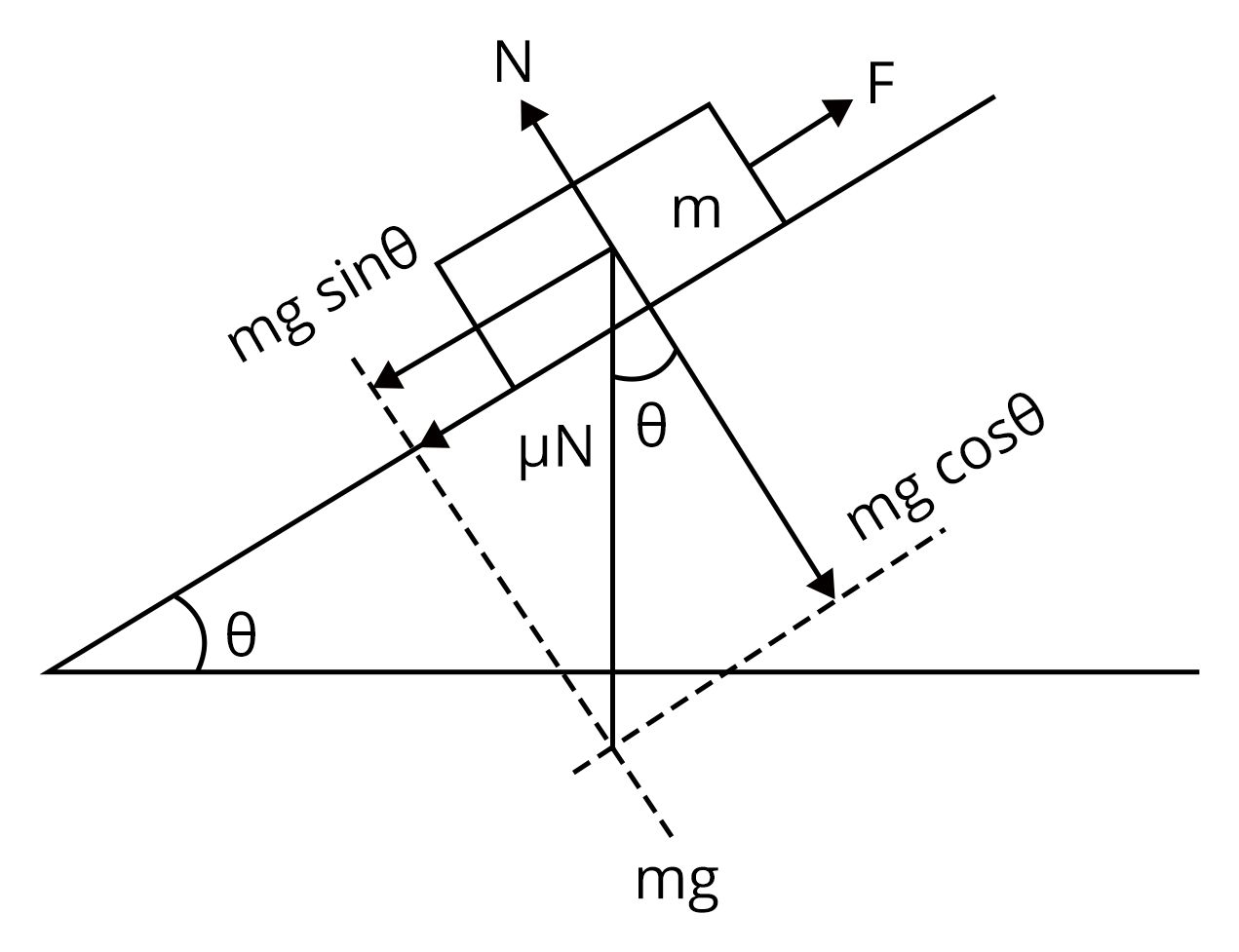
Now, we are asked to determine the acceleration of the body. We know that the,
$F_{net}=ma$ and the acceleration a will be along the surface. Thus, the net force we need will be along the surface.
Thus, we get:
$F_{net}=mg \sin \theta -{f_k}$
$ma=mg \sin \theta-\mu N$....(1)
Now, from FBD, value of N (normal force) will be: $N=mg \cos \theta$
Therefore, equation (1) becomes:
$ma=mg \sin \theta-\mu \left(mg \cos \theta \right)$
$a=g\left (\sin \theta-\mu \cos \theta\right)$
Therefore, acceleration of the given body on inclined plane is $g\left (\sin \theta-\mu \cos \theta\right)$.
Key Point: Since the body is acting on the rough surface the frictional force acting will be kinetic friction or sliding friction.
2. One end of a string of length l is connected to a particle of mass m and the other to a small peg on a smooth horizontal table. If the particle moves in a circle with speed v the net force on the particle?
Sol:
Given,
The length of a the string=l
The mass of the particle is m and it is moving with velocity v in a circular path. Now we are asked to determine the net force acting on the particle.
Since one end of the string is attached to the particle, the net force acting will be tension force, and this will be equal to the centripetal force acting on the particle.
Therefore, we write
Net force=Centripetal force
$T=\dfrac {mv^2}{r}$
Therefore, the net force acting is tension force T.
Key Point: When a particle is attached to one end of the string and it is further subjected to rotate then, the net force acting will be the tension force.
Previous Year Questions of Laws of Motion
1. A particle moving with velocity $\vec V$ is acted by three forces shown by the vector triangle PQR. The velocity of the particle will : (NEET 2019)
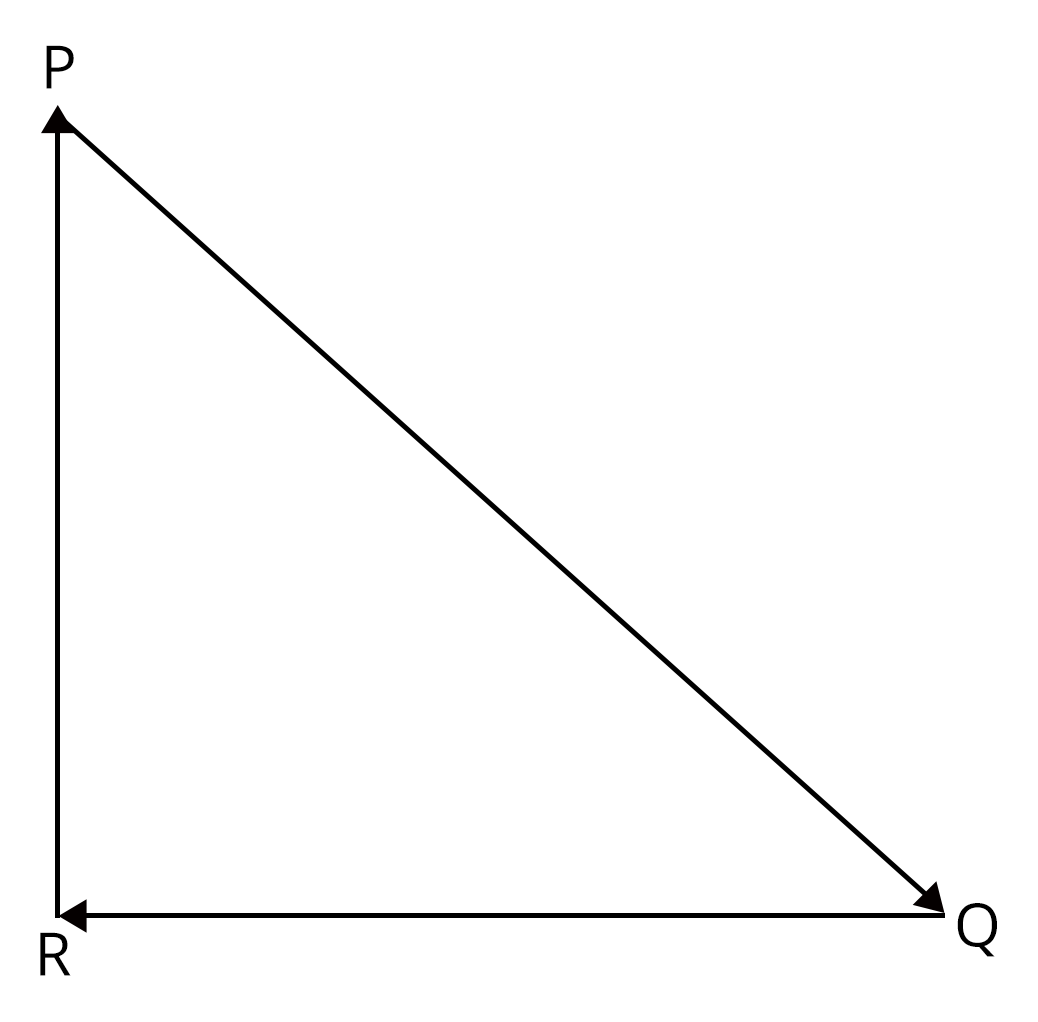
Increase
Decrease
Remains constant
Change according to the smallest force $\vec {QR}$
Sol:
In this question, we are given that a particle is moving in closed loop, it implies that the net force acting on the particle will be zero.
I.e., $\vec F_{net}=0$
$m \left[ \dfrac {d\vec v}{dt}\right]=0$
$\dfrac {d \vec v}{dt}=0$
v= constant
Therefore, option C is right answer.
Trick: In closed paths, the net force acting on the body will be constant and velocity will constant.
2. A block of mass m is placed on a smooth inclined wedge ABC of inclination θ as shown in the figure. The wedge is given an acceleration 'a' towards the right. The relation between a and θ for the block to remain stationary on the wedge is? (NEET 2018)
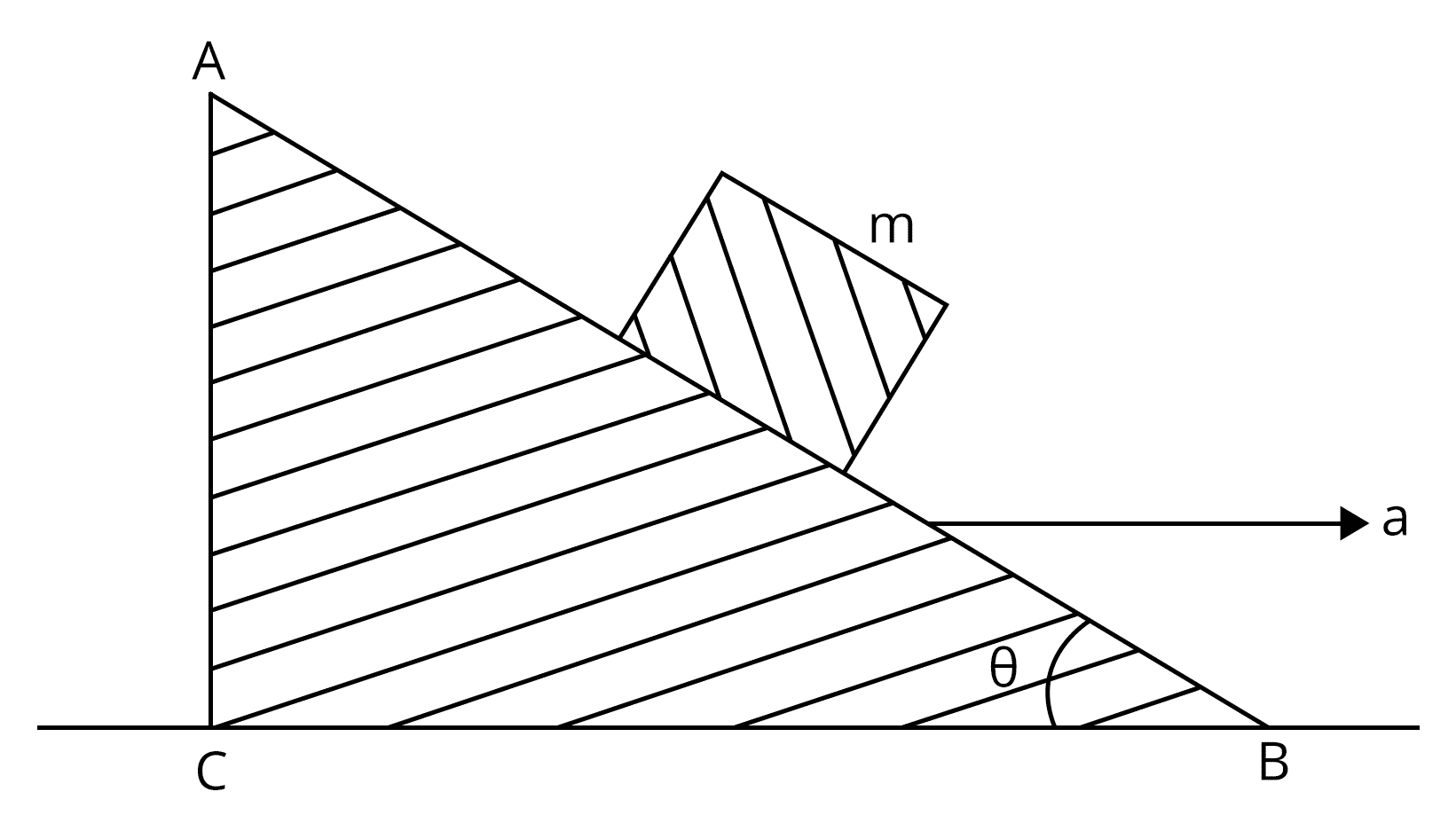
$a=g \cos \theta $
$a=\dfrac {g} {cosec \theta}$
$a=g \tan \theta $
$a=\dfrac {g} {\sin \theta}$
Sol: Let us start with free body diagram for the given problem.
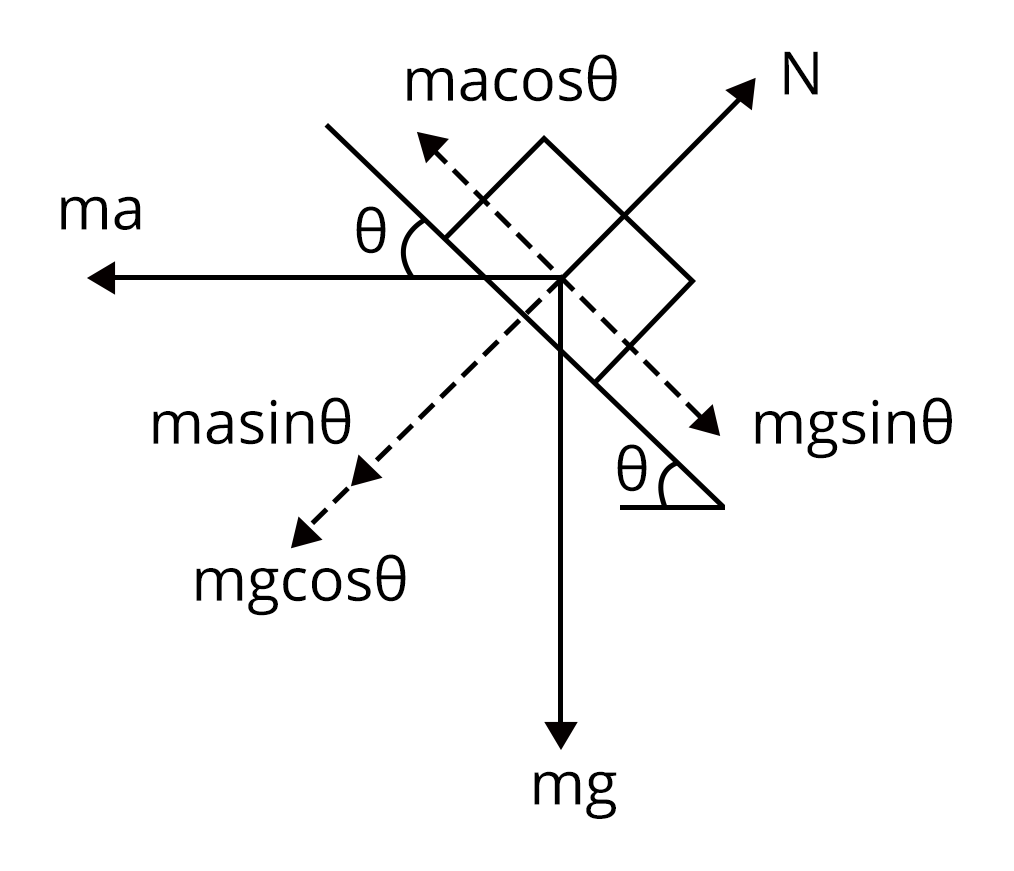
Here, we will use the concept of pseudo force to arrive at the solution. In non inertial frame, we will consider the object is at rest and the forces acting on the bock will be:
$ma \cos \theta = mg \sin \theta$
$a=g \dfrac { \sin \theta}{ \cos \theta}=g \tan \theta$
Therefore, option c is the right answer.
Trick: We should use pseudo force in the non-inertial frame so that we can consider the block is at rest.
Practice Questions
1. A rigid ball of mass m strikes a wall at 600 and gets reflected without loss of speed as shown in the figure. The value of impulse imparted by the wall on the ball will be( Ans: mv)
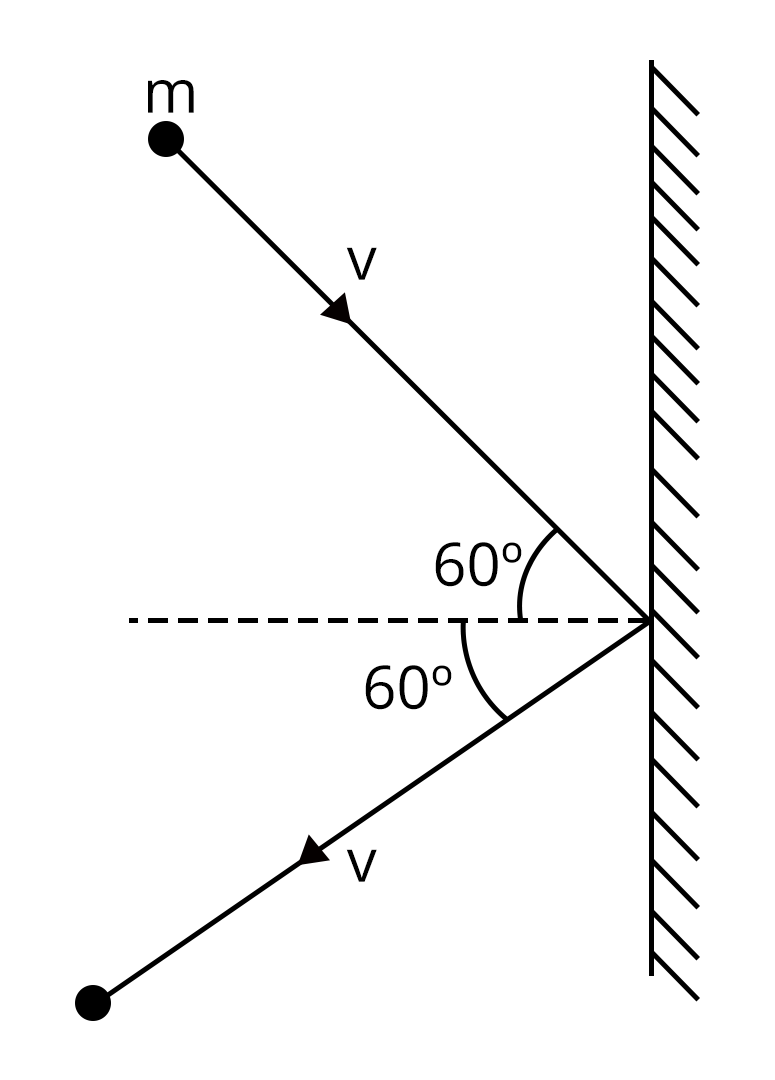
2. A block of mass m is placed on a smooth inclined plane of inclination θ and of mass M, which in turn is placed on a smooth horizontal surface AB as shown. A horizontal force F is applied on the side of the inclined plane so that the block m is just prevented from slipping over the plane. The value of F is (Ans: $\left (M+m\right) g \tan \theta$)
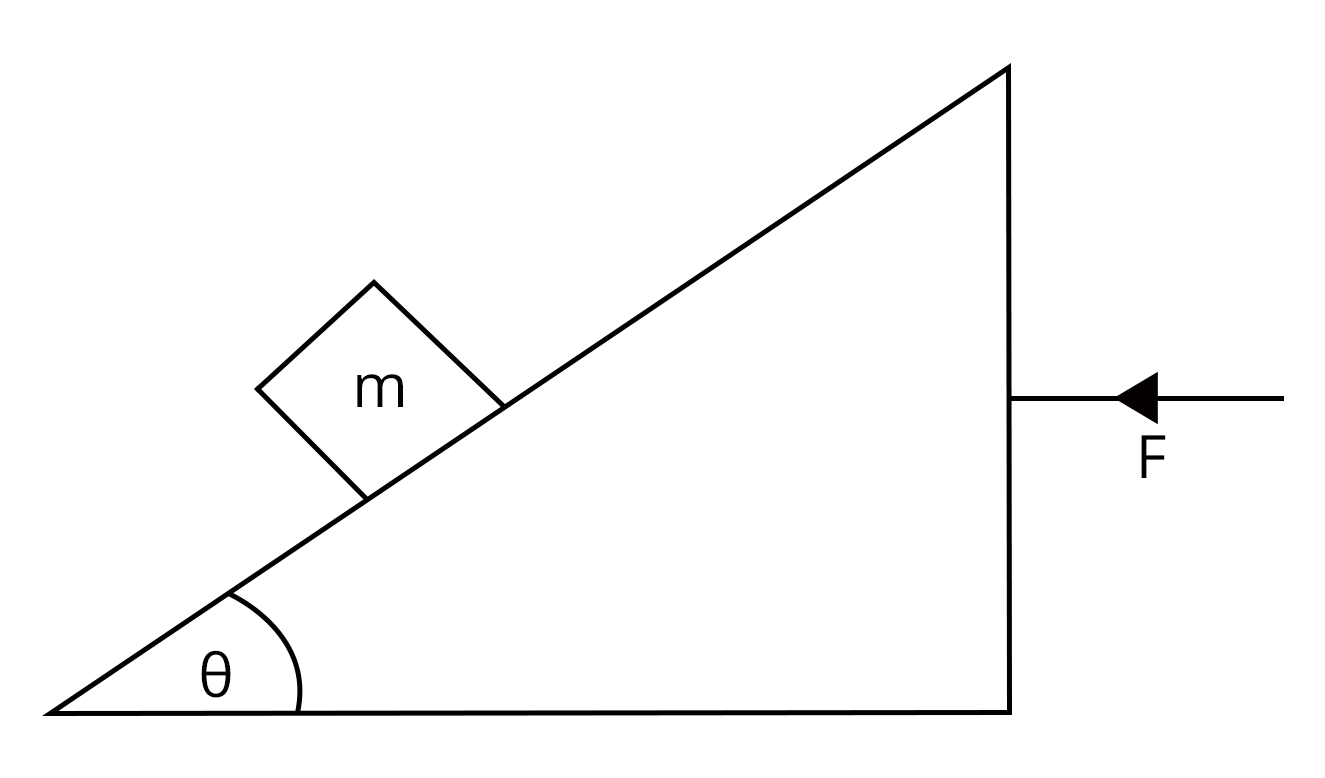
Conclusion
In this article, we discussed important concepts of the NEET exam from the chapter laws of motion. We have also solved a few important questions, recently asked questions and solved them with tricks. In this article, we have provided the practice questions that will help students to check their level of preparation.
NEET Important Chapter - Laws of Motion

 Share
ShareFAQs on NEET Important Chapter - Laws of Motion
1. Is laws of motion important for NEET?
With a weightage of 3%, Laws of Motion is an important chapter in the NEET Syllabus. It is critical to have a firm grasp on the principles of this topic, not only to pass the exam, but also to comprehend its numerous applications in science.
2. How many questions come in NEET from laws of motion?
Laws of motion is one of the most significant chapters in physics, and the Physics NEET exam has a total of 45 questions. This chapter is worth 3% of your grade, and you can easily pass it.
3. Can I study laws of motion without studying kinematics?
Yes. They are, in fact, tied to one another. The motion in the 1D, 2D, and 3D portions is a significant aspect of the application of laws of motion issues. This topic is covered in at least 2-4 NEET questions.








 Watch Video
Watch Video
